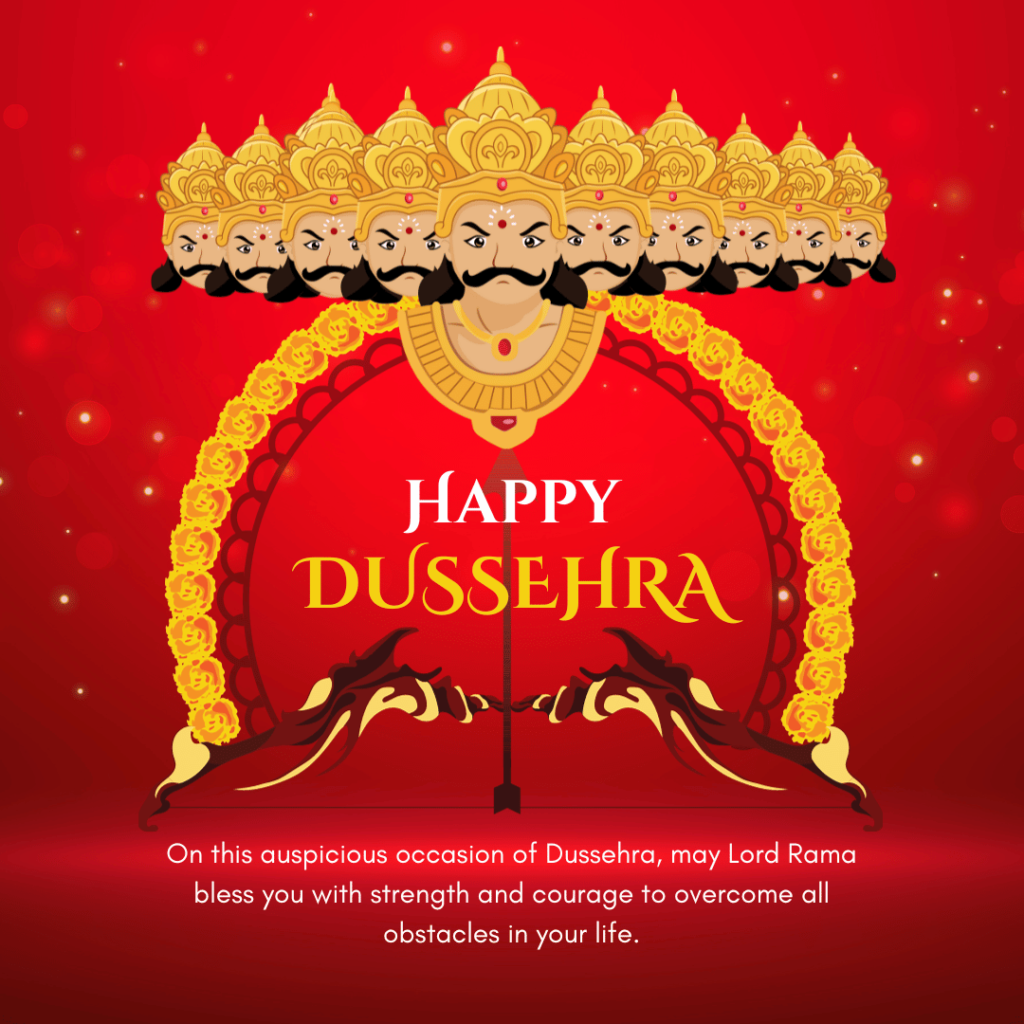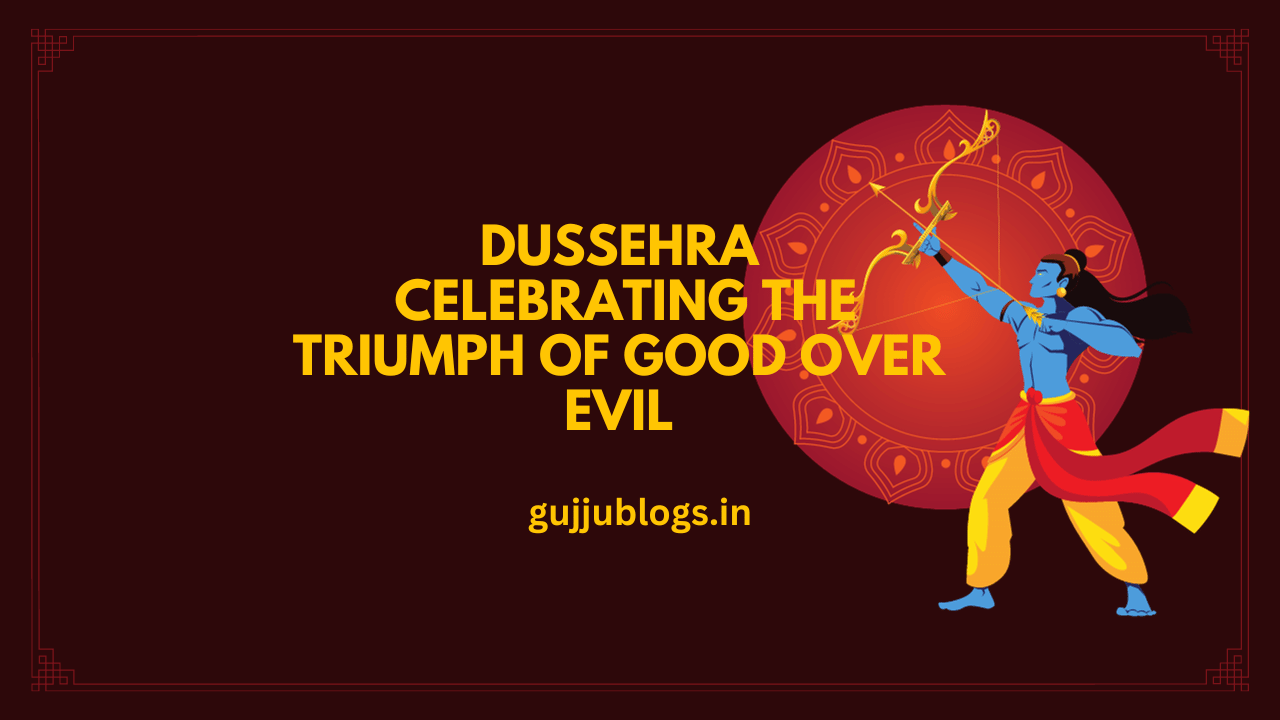The Hindu holiday of Dussehra, also known as Vijayadashami, is one of the most significant. It is observed on the tenth day of Ashwin, the seventh month of the Hindu Luni-Solar Calendar, which usually corresponds to September or October in the Gregorian calendar. The event honors the triumph of good over evil, symbolized by Lord Rama’s victory over the demon king Ravana.
Although Dussehra is widely observed throughout India, the festival’s significance differs slightly from one location to another. The event is predominantly observed in North India as a celebration of Lord Rama’s triumph over Ravana. The festival in East and South India commemorates Goddess Durga’s victory over the demon Mahishasura.
Dussehra continues to be a holiday that honors the victory of good over evil, justice over unrighteousness, and knowledge over ignorance despite these geographical differences. People should gather to commemorate the triumph of light over darkness at this time.
History of Dussehra
The Ramayana, an old Hindu epic, can be used to trace the origins of Dussehra. According to the Ramayana, the ruler of Ayodhya, Lord Rama, his wife Sita, and his brother Lakshmana were banished for fourteen years to the wilderness. Sita was kidnapped by the demon king Ravana of Lanka when they were in exile. With the aid of the monkey king Hanuman, Rama and Lakshmana were able to rescue Sita and outduel Ravana in a bloody conflict.
Dussehra is observed on the tenth day of the month of Ashwin, the day when Rama vanquished Ravana. Hindus burn effigies of Meghnad, Kumbhakarna, and Ravana to represent the triumph of good over evil on this day throughout India.

Food to eat on Dussehra
According to Hindu mythology, Lord Rama’s favorite dessert was jalebi. After defeating Ravana on Dussehra, Lord Rama is believed to have celebrated his victory by eating jalebi. Fafda jalebi is a popular snack in Gujarat, and is often eaten on Dussehra to celebrate the festival. It is a symbol of joy and celebration. Eating Fafda jalebi on Dussehra is also a way to keep up with tradition and to celebrate the festival with friends and family.

It’s customary to feast and celebrate Dussehra. On Dussehra, a number of common foods are consumed, including:
- Rice cooked with spices and veggies is known as pulao.
- Biryani: A rice meal that is seasoned and cooked with meat or veggies.
- Kheer: Rice, milk, and sugar are combined to make a delicious rice pudding.
- Jalebi: A delicious batter made of flour and sugar syrup that is deep-fried.
- A delicious ball consisting of gram flour, sugar, and ghee is called a ladoo.
How Dussehra is celebrated
Everywhere in India, Dussehra is observed with great fanfare and splendor. Burning effigies of Ravana, Kumbhakarna, and Meghnad is a traditional part of the event in North India. Goddess Durga statues are submerged in rivers or the ocean as part of the festival celebrations in East and South India.
Dussehra is also widely observed in the following ways:
- To pray to Lord Rama or Goddess Durga, Hindus go to temples during Dussehra.
- Attending a Ramlila performance: A traditional drama that portrays the life of Lord Rama is called Ramlila. During Dussehra, Ramlila plays are performed all over India.
- Dussehra is a time for celebration and feasting, which includes eating sweets. Eaters enjoy themselves with their families and friends while indulging on sweets and delectable fare.
Other Attributes
Dussehra is a festival that is rich in culture and tradition. In addition to the religious and cultural significance, the festival also has a number of other attributes.
- Economic significance: Dussehra is a major economic event for India. The festival generates billions of dollars in revenue through tourism, shopping, and other related activities.
- Social significance: Dussehra is a time for people to come together and celebrate. The festival helps to strengthen social bonds and promote community spirit.
- Educational significance: Dussehra is a time to learn about the Hindu epics, the Ramayana and the Mahabharata. These epics teach important moral lessons and inspire people to live virtuous lives.
Conclusion
In conclusion, Dussehra is a truly unique and special festival. It is a time for people to come together and celebrate the victory of good over evil, righteousness over unrighteousness, and knowledge over ignorance. The festival is rich in culture, tradition, and significance. In case we get to know more about it in future, we will add it to the article.
